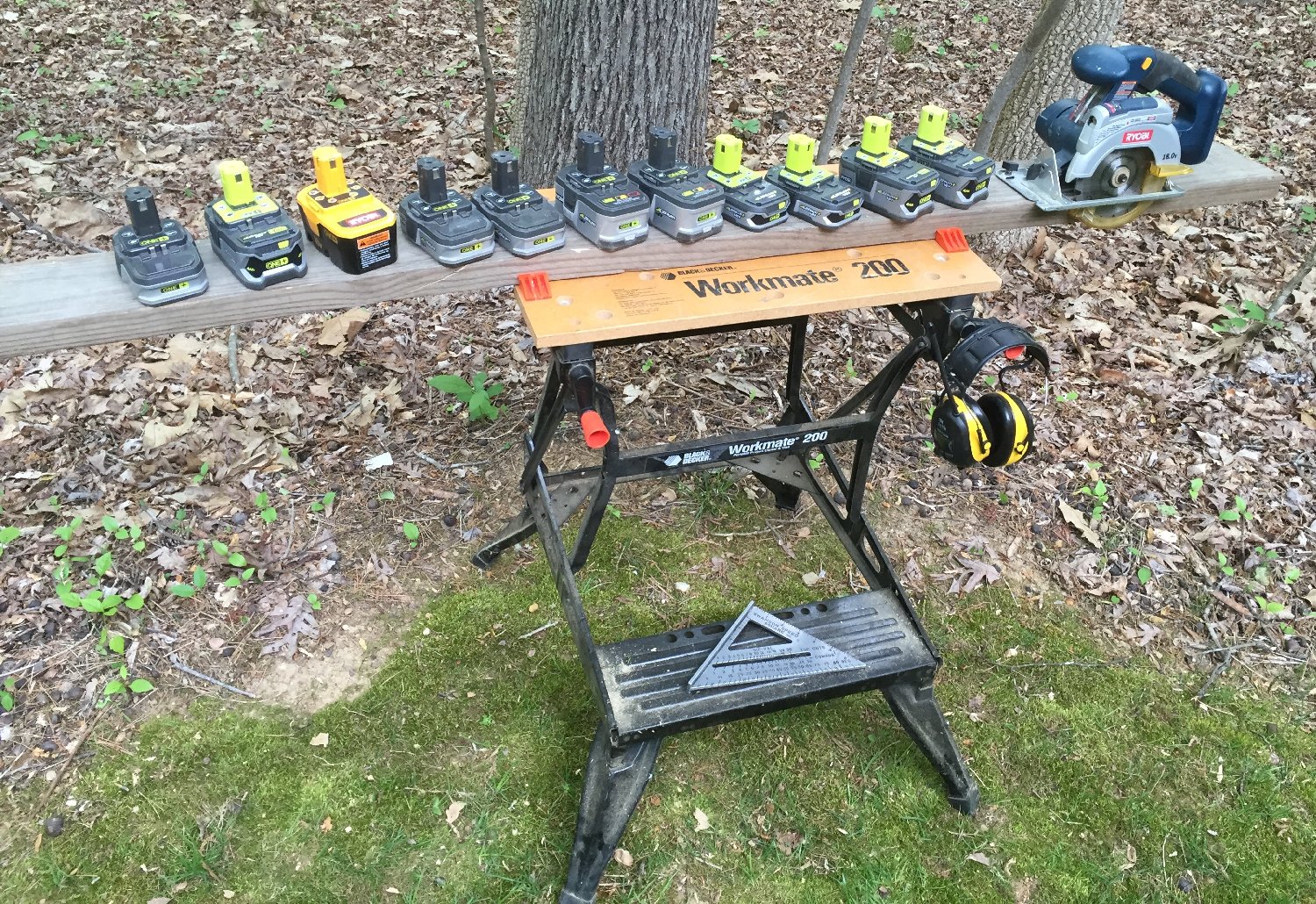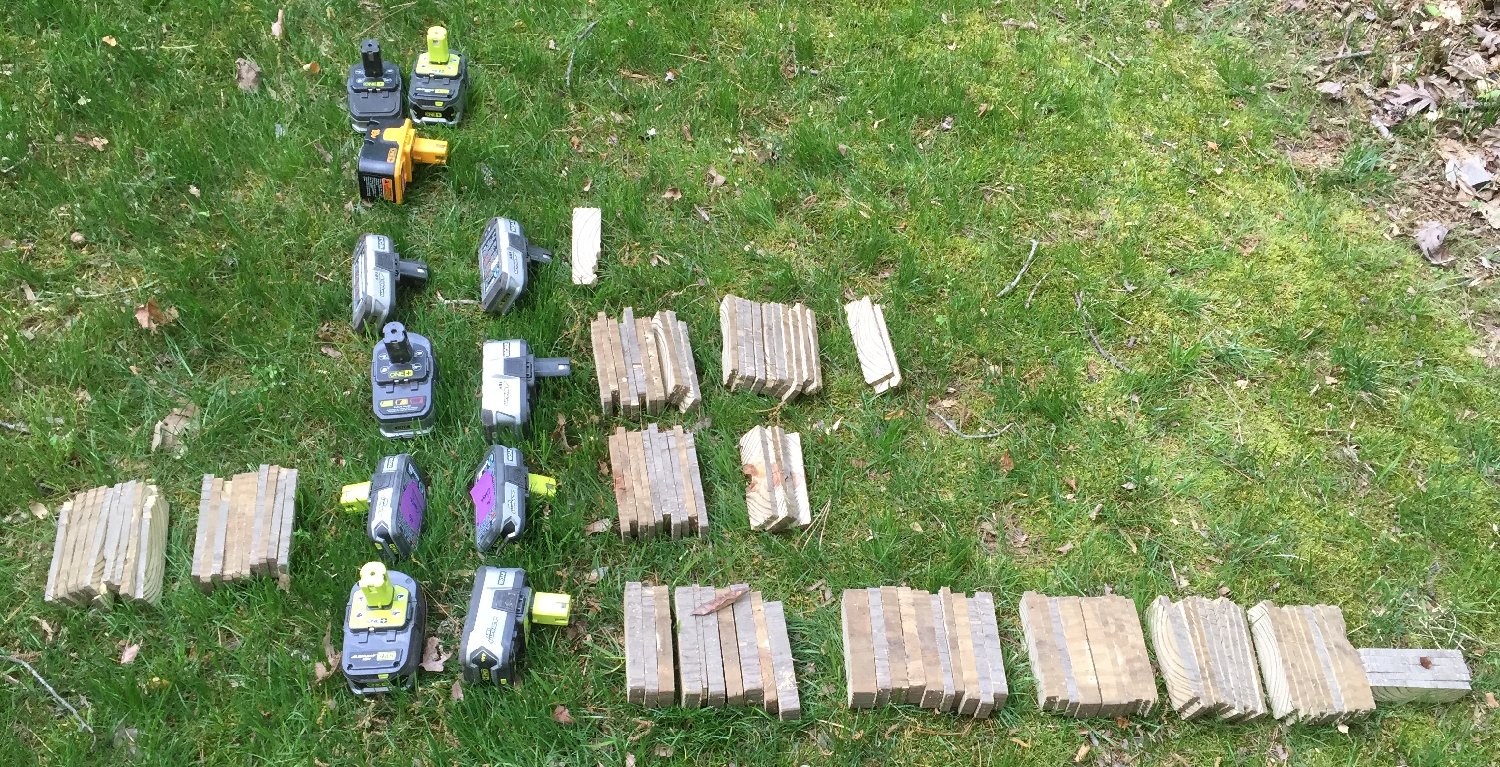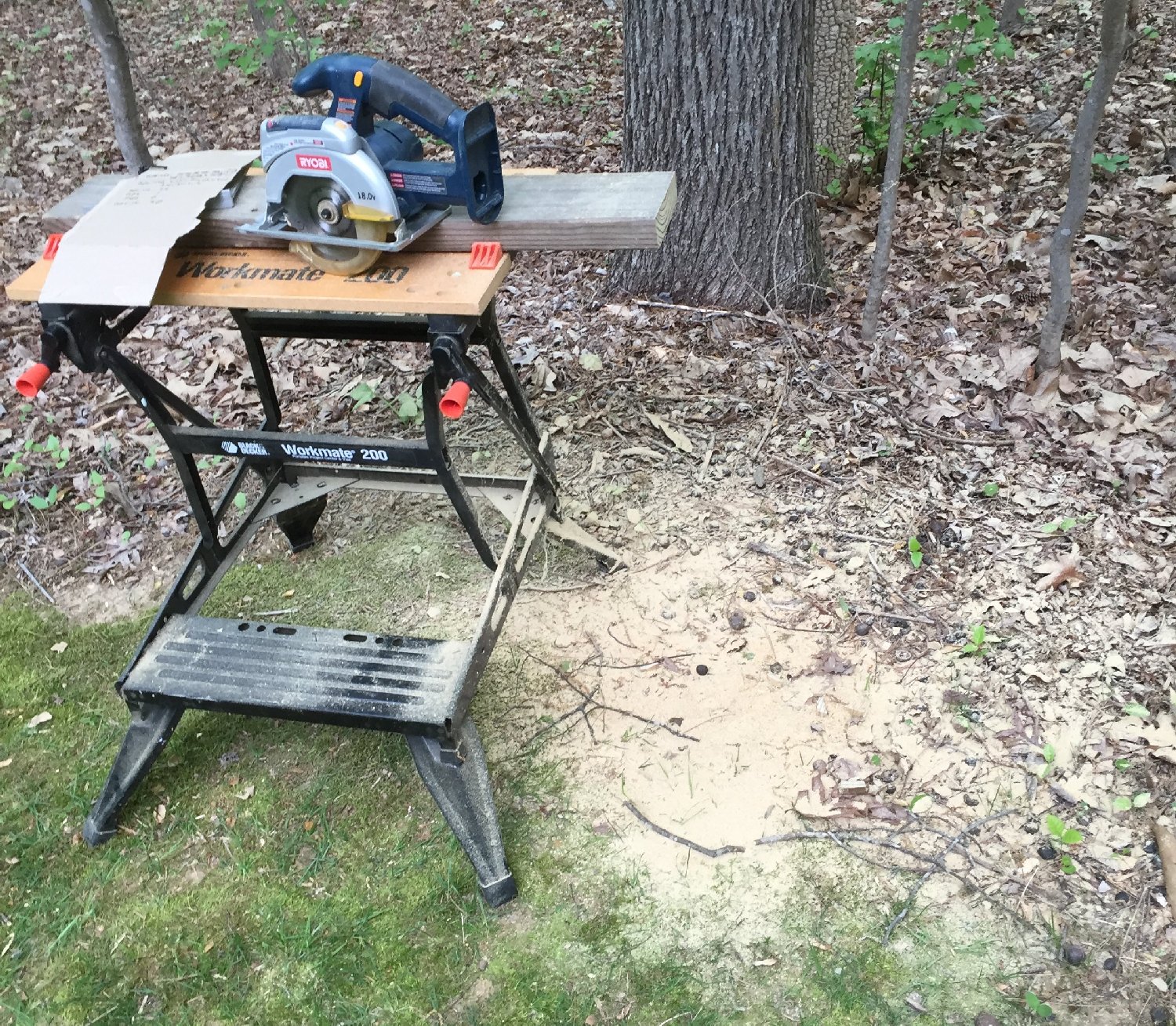 |
 |
 |
 |
 |
| Battery | Battery Age | Rated Capacity | Measured Capacity | Measured as % of Rated | # Cookies Cut | mAh/Cut | Comments |
| P108 | 4 yrs old | 4,000 mAh | 3,421 mAh | 86% | 55 | 62 | |
| P107 #1 | New | 1,500 mAh | 1,328 mAh | 89% | 14 | 95 | Several knotholes encountered, may have skewed results. |
| P107 #2 | New | 1,500 mAh | 1,322 mAh | 88% | 20 | 66 | |
| P104 | 9 yrs old | 2,400 mAh | 1,512 mAh | 63% | 22 | 69 | |
| P103 #1 | 8 yrs old | 1,300 mAh | 1,049 mAh | 81% | 0 | N/A | |
| P103 #2 | 8 yrs old | 1,300 mAh | 1,037 mAh | 80% | 1 | ||
| P100 | 12 yrs old | 1,700 mAh | 419 mAh | 25% | 0 | N/A |
| Battery | Rated Capacity | # Cuts (est) |
| P108 | 4,000 mAh | 61 |
| P105 | 2,400 mAh | 36 |
| P100 | 1,700 mAh | 26 |
| P107 | 1,500 mAh | 23 |
| P102 | 1,300 mAh | 20 |